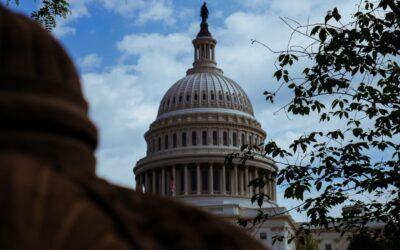Will the American Rescue Plan Act of 2021 benefit your pension plan?
The American Rescue Plan Act of 2021 (ARPA) became law on March 11, 2021. It contains many provisions affecting pension plans.
How it will affect your pension plan depends on your plan’s financial health.
AMERICAN RESCUE PLAN ACT OF 2021: MULTIEMPLOYER PLANS
For a Multi-Employer Plan in poor and declining financial health, the new law goes far in assisting. The ARPA includes a modified version of the Butch Lewis Act. This is also referred to as the Emergency Pension Plan Relief Act of 2021 (EPPRA). EPPRA restores financial health to roughly 185 plans or about 15% of all multiemployer plans. EPPRA also provides funds to make benefit payments for the next 30 years including making whole payments that were suspended.
This one-time payment does not need to be paid back; however, some strings are attached such as investment guidelines on the cash infusion. According to current projections, the cost of this relief is $86 billion.
How to Qualify for the One-Time Payment
- Be in critical and declining status
- Have suspended benefits with Treasury approval under MPRA
- Have a funded status under 40% and significantly more retirees than active participants
- Be insolvent
There is some relief for multiemployer plans not in one of these categories. However, primarily funding relief relies on improving economic conditions and a favorable investment climate if the plans are to improve financial health. The new law allows a temporary delay in the designation of multiemployer plans as in endangered, critical, or critical and declining status. Additionally, allows the plan to keep the same status as the prior year. It allows for an extension of the existing Funding Improvement and Rehabilitation plans.
EPPRA allows enhanced asset smoothing and allows actuarial losses due to Covid-19 (investment, mortality, or other) to be amortized over 15 years. What is uncertain at this time is what will happen with Employer Withdrawal Liability. The PBGC has the freedom to write the regulations and guidance and may require that Employer Withdrawal Liability be calculated for the next 10-15 years, ignoring the one-time cash payment under EPPRA.
AMERICAN RESCUE PLAN ACT OF 2021: SINGLE EMPLOYER PLANS
Single Employer Plans struggling to make the minimum required contributions will find two provisions of the new law that will greatly reduce their contribution burden. This allows plan sponsors to allocate scarce resources to other enterprises or payroll.
Provision 1 is Interest Rate Relief
ARPA provides that the segment rates for determining a plan’s minimum funding fit within a narrow corridor around the 25-year averages. This new corridor is narrower than the corridor under HATFA and MAP21. ARPA provides for a corridor of 95% – 105% around the 25-year averages. It stays this narrow until 2026 when it starts to widen by 5% a year until it gets 70%-130%.
The law also imposes a 5% floor on the 25-year averages, which means that no segment rate will be lower than 4.75 (95% of 5%) at least until 2026. While these provisions go into effect for 2020. A plan sponsor may elect to defer the implementation until 2021 or 2022. Since higher interest rates will lower the plan’s funding liability, it will also raise the plan’s AFTAP for the year, possibly affecting the plan’s IRC Section 436 benefit restrictions.
Because of this provision, the law allows the plan sponsor may elect to defer the law for all purposes or defer for only determining the AFTAP.
Provision 2 is Extended Amortizations
ARPA replaces 7-year amortizations with 15-year amortizations for all future years after a “fresh start” where all existing amortizations and installments are reduced to zero. Then, a 15-year amortization of the unfunded liability will be set up. Each year following, a new 15-year amortization of the new gains or losses will be created. This provision of the law goes into effect in 2022. However, a plan sponsor may elect the “fresh start” as early as 2019.
Single employer plans in better financial straits will find the above law changes allows them more flexibility. Keep in mind that contributing significantly less to their plan, while allowed, could hinder competing objectives such as reducing PBGC premiums, funding to terminate the plan, or funding a benefit increase.
AMERICAN RESCUE PLAN ACT OF 2021: CONTACT US
However, these changes do provide flexibility concerning determining the timing of their contributions by making requiring a much smaller minimum required contribution one year and a potentially much higher contribution much higher than the minimum made in the following year.
Contact Watkins Ross if you need help deciphering this act and how it affects you.



